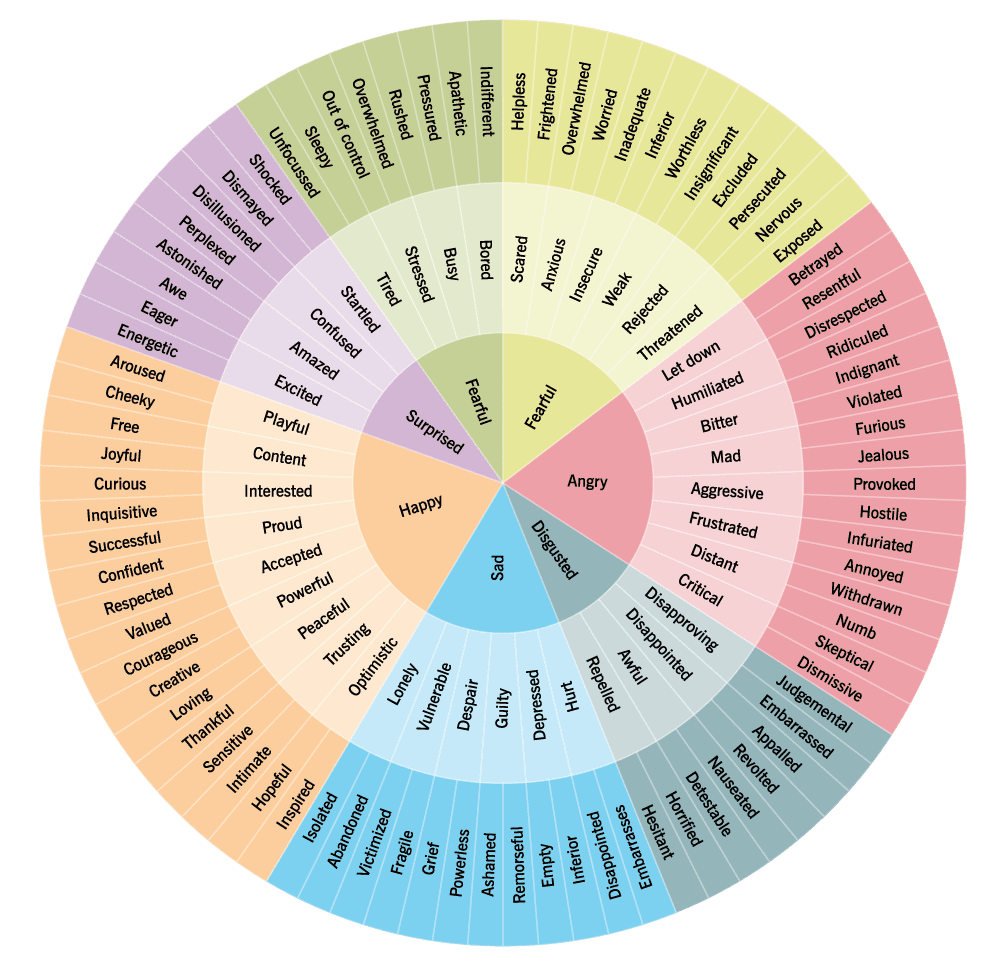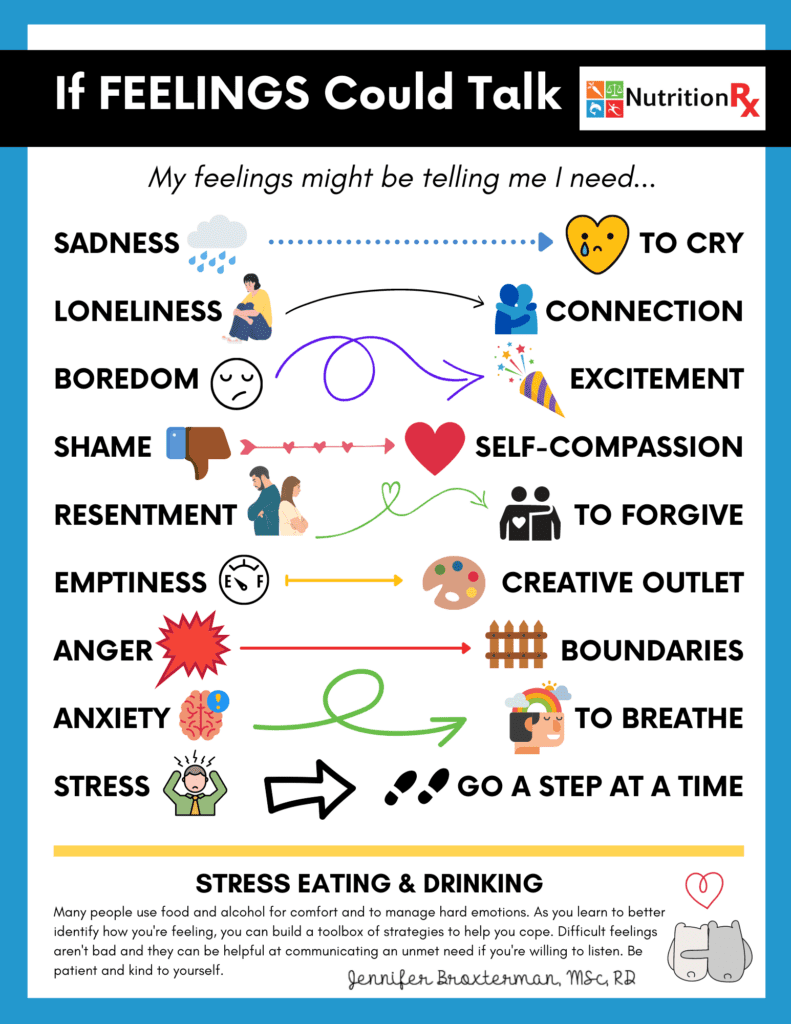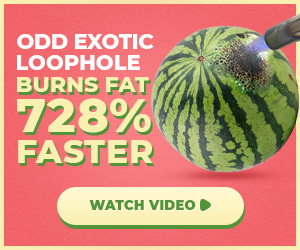Binge Eating: 6 Steps to Food Freedom

Reviewed by Jennifer Broxterman, MSc, RD
I by no means thought I’d be a “normal” eater.
For a very long time, my finest hope at peace was to preserve my kitchen empty. Just a number of staples so I had breakfast within the morning, and possibly dinner at evening.
Because it felt like all the pieces was a set off meals.
I’d stand in entrance of my cabinet consuming—get this—dry oats by the handful, jaw working furiously, like a horse.
I ate carrots—kilos—like I used to be mad at them, snapping their our bodies viciously, anger-chewing them to pulp, stuffing them into my belly.
I’d eat peanut butter in ice cream scoops, or frosted excessive on prime of rice crackers.
Forget baking cookies. I’d damage the comfy ritual by consuming the entire tray.
I used to be at all times hungry.
Actually, I used to be full—impossibly full—however I at all times wished extra.
I wished to cease.
(Oh man, I wished to cease.)
I questioned how “normal” folks might preserve meals of their home: tins of cookies untouched for weeks, jars of peanut butter that lasted longer than two days.
It was inconvenient, and I felt like a freak.
I didn’t know the way to climb out.
Until I did.
It took a great six or seven years of experimenting and failing, however ultimately—clumsily, and positively not magically in a single day—I became an individual I by no means thought I’d be:
An individual whose ideas weren’t always occupied by meals.
An individual who stopped viewing themselves as a set of flesh-lumps to be in contrast and managed.
An individual who discovered a house of their body.
Below, I’ll share six steps that helped me get well from binge consuming.
While scripting this story, I additionally consulted with Jennifer Broxterman, MS, RD, a registered dietitian and PN Certified Coach who focuses on consuming disorder restoration, and Ary Maharaj, M.Ed., a registered psychotherapist who facilitates a remedy group out of Sheena’s Place, a help heart for consuming issues in Toronto, Canada. Their insights are woven all through this text.
While this recommendation doesn’t substitute the care of a health skilled, we hope it supplies you with an inkling of a path ahead, and a way of hope.
I by no means thought I’d get to the place I’m, actually. But I’d like to inform you how I did.
Step #1: I got here out of hiding.
My restoration began after I cracked the door open and let one other individual peer in.
Her title was Sarah.
We weren’t significantly shut. We bought alongside properly, confided in one another about our crushes, however principally, we studied collectively.
Both Psychology majors, we shared Abnormal Psychology and Statistics courses. As we practiced our ANOVA calculations, someday I informed her.
“Sometimes I binge eat,” I stated, testing.
Her response shocked me.
“Oh yeah, I do that. Like when I’m sad or stressed, I’ll eat everything,” she stated with out taking her eyes off her graph paper, as if she had been telling me the place she’d picked up her morning espresso.
I sat quietly.
I didn’t say extra, however I let a sense wash over me: reduction.
I felt much less alone, much less bizarre. And surprisingly, accepted.
If another person might obtain this piece of knowledge with out working away, possibly I might keep and have a look at it a bit of nearer too.
Try it your self
If you’ve been hiding your consuming behaviors from others, you’re most likely doing it for a great purpose.
This stuff is tough to share. It’s weak, and individuals who binge typically carry disgrace round this behavior.
Unfortunately, hiding is disgrace’s favourite place to develop, and disgrace tends to perpetuate binge and luxury consuming.1, 2
Consider who in your life you belief with delicate info—a coach, a pal, a physician—and inform them what you’ve been going by. Alternatively, seek the advice of the “Think you might need help?” field on the finish of this text for assets and help.
Step #2: I finished weight-reduction plan and proscribing.
Wait a sec… looks as if my “problem” was consuming an excessive amount of, not too little, proper?
Initially, that’s what I assumed too.
However, in actuality, the basis of my battle with meals was restriction.
For months at a time, I’d management my energy, eat loads of tuna and low-fat salad dressing, and lose weight.
Then I’d inevitably rebound, consuming all the pieces in sight.
When the binge was over, I’d really feel ashamed and pledge to undo the injury by weight-reduction plan more durable. And so the cycle continued.
What I didn’t know on the time?
Overeating is a pure response to undereating.
When I plowed into jars of cashew butter after weeks of managed parts, it wasn’t my willpower that was failing; it was my biology profitable. My body was simply making an attempt to preserve me alive.
According to Broxterman, weight-reduction plan and meals restriction are identified triggers for binge consuming.
“Humans are hardwired to not die of famine. When food is chronically unavailable, all our senses become acutely attuned to finding, then consuming, as much food as possible. After periods of restriction, we are basically designed to binge to compensate.”
Once I acknowledged that binge consuming practically at all times adopted restriction, I made a rule:
No extra letting myself get hungry.
I promised myself I’d have three sq. meals each day, plus two or three snacks unfold out.
Through talking with Broxterman, I realized my method was comparable to a technique referred to as mechanical consuming, the place you eat at common intervals all through the day, no matter the way you’re feeling bodily or emotionally. (It’s typically recommended when an individual has misplaced contact with their pure starvation and fullness cues by power weight-reduction plan or disordered consuming.)
With a routine of sq., satiating meals, my urge to binge plummeted.
I felt uncomfortable about consuming common, full meals, however I additionally felt massively relieved to see the violent swings between excessive starvation and epic binges diminish.
Yes, I felt fearful that consuming frequently would trigger me to achieve weight. But I knew weight loss couldn’t be the final word purpose anymore; love and care was.
Try it your self
Mechanical consuming goals to re-establish a dependable routine of consuming balanced meals and snacks, in addition to a connection to your starvation and fullness cues.
In basic, mechanical consuming requires that you simply eat 3 meals and three snacks unfold out all through the day, with roughly 3 hours between consuming. (It’s generally referred to as “the rule of 3s.”)
Here’s what that appears like:
- Within the primary hour of waking, eat breakfast.
- About 3 hours after breakfast, eat a snack.
- About 3 hours after your morning snack, eat lunch.
- About 3 hours after lunch, eat a day snack.
- About 3 hours after your afternoon snack, eat supper.
- About 3 hours after supper, eat a bedtime snack.
In phrases of quantities, you should utilize a device like our Nutrition Calculator (choose the “Improve health” purpose), which can assist you determine what number of parts of protein, carbohydrate, fat, and fruit/greens you need to get, and the way to unfold them out all through the day.
Step #3: I slowed down.
It’s laborious to describe the urge to binge, though I feel anybody who’s handled robust compulsions can relate:
It’s an itch, a Siren’s name, a bit of monkey in your mind tap-tapping, disrupting your resolve. It’s that sport the place somebody tells you, “Don’t think of an elephant” after which swiftly, your mind is solely ideas of grey wrinkled knees, feathered black eyes, a heavy swinging trunk.
I’d get the urge to EAT, to compete in a pie-eating contest, with nobody watching. And that urge—like a horrible case of tinnitus—wouldn’t quiet till I binged.
When I began to eat common meals and snacks, the craving-tinnitus quieted. But sometimes, I felt just like the noise was too loud, and I simply wanted a “fix.”
So I made one other rule:
If I actually, actually couldn’t cease myself from bingeing, I’d let myself. But I had to sit down, use plates and cutlery, eat slowly, and take pleasure in it.
Binges are sometimes characterised by quick, distracted, frenzied consuming.
In my case, I’d stand in entrance of the fridge, or the cabinet, and use my fingers—no matter device was most available—to shove meals into my mouth.
“In a typical binge, most people find that their brains and bodies go ‘offline.’ They disconnect from their thoughts, feelings, and body sensations as they wolf down food,” says Broxternman.
“So, slow eating introduces something new into the binge eating episode that’s usually turned way down: AWARENESS.”
Slow consuming prevented me from numbing out whereas consuming.
When I finished utilizing meals as an anesthesia, all the sentiments and ideas I’d been avoiding got here up. All my feelings had been on the desk, like a loving however dysfunctional household: consolation, vacancy, boredom, antsiness, loneliness, hope.
It was rather a lot to cope with, particularly at first. But quickly I noticed, coping with them was higher than the futile effort of making an attempt to stuff them down.
Try it your self
Next time you get the urge to binge, simply discover it. “I feel like I need to binge,” you may say to your self inwardly or out loud.
If you’re feeling just like the binge is an unstoppable prepare, simply lay out your tracks for a smoother experience:
First, serve your self some meals. A portion of no matter you need, to begin.
Then, sit down on the desk.
Pause, and possibly take a number of deep breaths. Is it uncomfortable to not dive in instantly? It’s okay. You’re dealing with it.
Now, take your first chew, and—revolutionary!—put your utensils down.
Take one other breath.
Chew. Chew. Chew.
Pay consideration to the style and texture of your meals. Enjoy it, even.
Relax.
Wait a number of extra moments earlier than selecting up your utensils once more.
Repeat.
That’s it.
Sounds easy, however for those who’re used to consuming shortly—even for those who don’t determine with bingeing—the above is perhaps uncomfortable to learn, not to mention follow.
Eating slowly means you’ve got to concentrate, and truly really feel the sensations that emerge out of your heart and body and thoughts.
(Gulp.)
However, all of the feeling is WHY this device works. You’re slowly taking away meals’s energy, as a result of meals can not function an emotional escape hatch.
Your emotions can have to discover one other place to go. That’s a great factor.
Step #4: I developed my tolerance for icky emotions.
I hadn’t realized how, through the years, meals had change into such a panacea for me: I ate after I felt bored, fearful, lonely, excited. Any feeling that felt overwhelming, that I struggled to course of alone, I handled by distracting myself with meals.
This is frequent.
Research exhibits that individuals who have a tough time regulating their feelings are extra seemingly to binge eat.3
Add to that, binge consuming episodes are sometimes triggered by uncomfortable feelings—and consuming can present reduction from them (at the least quickly).3
Learning to deal with robust feelings is commonly an essential goal when it comes to restoration from compulsive consuming.
Personally, after I eliminated meals as a coping mechanism, I felt flooded with emotion. To handle, I principally turned to journaling. I at all times felt a launch after I wrote down my emotions and ideas.
For me, it felt essential to discover an exercise that felt distracting sufficient that I didn’t really feel as compelled to eat, however not so consuming that I couldn’t additionally really feel my emotions as they handed by me.
Through this behavior, I realized how to talk with myself once more.
Instead of eating-for-all-occasions, I realized when to journal, when to go for a motorcycle experience round my metropolis, when to re-organize my sock drawer, when to cry, and when to invite a girlfriend out for a sloppy evening of dancing.
My life bought larger, larger, extra joyful, extra supported, extra significant, and eventually, “full.”
Try it your self
For her purchasers who battle with emotional consuming, Broxterman developed a intelligent device referred to as “The Unmet Needs Exercise.”
It helps construct consciousness between your emotional triggers and your urges to eat, and encourages you to develop extra productive coping mechanisms.
Here’s how to do it:
The subsequent time you’re feeling a robust compulsion to eat that’s not due to bodily starvation, take a minute to determine what you’re feeling.
If you’ve got hassle articulating your emotions, take a look at the sentiments wheel picture under. Start on the heart with the broadest emotion you possibly can determine, and work your method outwards to get extra particular.

Then, ask your self: “What is this feeling trying to tell me?”
You can use Broxterman’s picture under to information you, however finally you need to determine what distinctive wants YOUR emotions are attempting to categorical, plus the way you may fulfill that want.

For instance, for those who determine that you simply really feel bored, and that boredom is telling you that you simply miss having enjoyable with your folks, strive calling or texting a pal, or planning a enjoyable occasion within the subsequent week.
Then, see the way it makes you’re feeling.
This isn’t a right away repair, however over time, you’ll develop a deeper understanding of your emotional wants, and a broader toolbox of coping methods.
Step #5: I realized (and practiced) self-compassion.
Shaming and criticizing myself into altering didn’t work.
What did?
Love.
Barf, I do know.
But it’s true: The “source” I got here to depend on to gas my progress was a deep want to be type, encouraging, and caring to myself.
This can be referred to as self-compassion.
Where my intuition was vicious self-criticism and disgust, I step by step aimed to substitute it with understanding and kindness.
I went from saying issues like…
“Why are you such a screw-up? Are you NEVER going to get a hold of yourself??”
…to issues like…
“Man, I’m sorry this sucks so hard. But I’m going to be here by your side while we figure this out.”
(Which “voice” do you assume made me really feel extra hopeful, much less confused, and extra able to change?)
When I checked out my body, I attempted to take away the label of “good” or “bad,” and simply give attention to the reality of it: I had a body. It carried me round. It held my inner organs in. It was organized in a sure method, at the moment.
As I frequently pivoted to self-compassion at any time when I struggled, my relationship to myself modified.
Instead of a punching bag, my body grew to become one thing nearer to a pet. A loyal canine that I genuinely wished to feed and stroll and never unduly stress. Maybe even give a pat on the pinnacle each from time to time.
Try it your self
Research exhibits that self-compassion truly performs a essential position within the emergence of consuming issues, in addition to the restoration from them.
Lower ranges of self-compassion—and better ranges of its counterpart, self-criticism—are related to4, 5, 6, 7, 8:
- More disgrace, guilt, self-blame, and unfavourable feelings like nervousness
- The next probability of creating an consuming disorder
- Poorer response to consuming disorder therapy
- Lower motivation to make constructive adjustments
Meanwhile, larger ranges of self-compassion are related to9, 6, 10:
- Increased appreciation and esteem of 1’s body
- Intuitive consuming, and fewer restrictive consuming
- Better consuming habits and more healthy meals selections
- The next tolerance for stress
- Lower charges of despair and nervousness
If you possibly can’t have a look at your self with out a scowl, self-compassion can be educated, like a muscle. And the extra you follow compassionate responses to your individual struggling, the extra computerized this type and supportive reflex will change into.
Rather than spell it out right here, we’ve bought a helpful self-compassion useful resource you possibly can follow your self—or print out for purchasers. Check it out: Self-Compassion Quickie
Step #6: I sought ongoing help.
After I informed my classmate Sarah, I started opening up to others (slowly). I began seeing a therapist, informed a number of different pals.
Interestingly, I felt probably the most resistance telling my closest family and friends members.
In my social circle, I used to be lengthy seen as “the healthy one.” I fearful that if I informed these folks what I used to be going by, I’d disappoint them. Maybe they’d even assume I used to be a fraud. (“You’re not healthy after all!”)
This in fact solely intensified my disgrace when my non-public behaviors didn’t align with the picture I knew folks related to me.
Despite my intuition to disguise, I started attending group remedy for ladies with consuming issues. Group remedy was troublesome—but it surely was additionally a reduction to meet different individuals who actually “got it.”
According to Maharaj, speaking about your challenges in a supportive group setting can actually speed up progress.
“We’re way more resilient and able to be self-compassionate when we have social support,” Maharaj says.
“The biggest predictor of someone’s mental health being more positive is if they have social support.”
Mostly, I discovered group remedy to be extremely releasing. I noticed myself in these different girls, and likewise noticed that—whereas they wrestled with their consuming habits—they had been nonetheless sensible, accountable, conscientious, and not damaged.
They had been greater than their consuming issues. They had been multi-faceted, advanced.
Maybe my consuming disorder didn’t have to outline me both.
It was gradual, and up-and-down, however over the months of remedy and journaling and speaking, my compulsion to numb with meals lessened. Even when my cravings had been excessive, I realized how to make it to the subsequent second, and the subsequent.
I knew I had a life outdoors my kitchen cabinets, and it was filled with journey.
Try it your self
Not everybody wants help past the casual confiding you may get from a trusted pal or member of the family.
However, for those who really feel such as you’re having hassle managing your compulsions to overeat, skilled assist—from a therapist or a therapist-led group—can assist.
You can strive Googling “eating disorder specialist near me” or “eating disorder group therapy near me,” or just seek the advice of the “Think you might need help?” field on the finish of this text.
Because binge consuming is commonly a response to unmanaged stress or robust feelings, some folks additionally discover mindfulness and stress administration apps to be helpful. For a information to a number of the finest, learn: Can these stress apps remodel your life for the higher?
Without conserving observe of it, I went a yr with out bingeing.
Then one other yr.
Then someday, about two years after my final episode, I binged. It was minor in contrast to my historical past, but it surely felt scary to “relapse” after years of relative peace.
Instead of hiding it, I talked about it with my then-boyfriend-now-husband. I used curiosity and compassion to have a look at what components may need contributed, and the way I would forgive myself and transfer on.
That was 12 years in the past.
(And I’ve been binge-free since.)
What “better” appears like (at the least for me).
I nonetheless have essential ideas about my body.
I’ve accepted these won’t go away.
I’ve realized—as unhappy as this may occasionally sound—there’s a voice inside me that, like a pal who’s burned me too many instances, I simply can’t belief.
But I can enable it to be there.
I not really feel compelled to act on these ideas—both to prohibit meals to get my body to a particular form, or to eat when it not feels good.
I be at liberty to eat what I would like.
I don’t really feel responsible about treats, and positively don’t really feel ashamed to eat them in public.
Sometimes I overeat, and generally I eat purely for consolation.
Turns out, that is a part of regular consuming.
As lengthy as I keep linked to my real want to deal with myself, I do know I can belief my urge for food—and myself.
Think you may need assistance?
In this text, we’ve talked about binge consuming as an occasional behavior or concern.
Binge consuming disorder—a extra extreme and power model of occasional binge consuming—requires skilled assist and is past a fitness or nutrition coach’s scope of follow.
However, binge consuming disorder is the commonest consuming disorder within the United States.11 Here’s how to acknowledge it.
Generally, folks with binge consuming disorder exhibit three qualities:
- They binge. This means consuming a bigger quantity of meals than different folks would have the option to devour, often inside a two hour interval.
- They really feel uncontrolled round meals, and sometimes responsible and ashamed after consuming.
- They binge frequently—at the least as soon as per week for 3 months—and don’t instantly “compensate” for the additional energy by over-exercising, proscribing meals, or purging (vomiting or utilizing laxatives after consuming).
If you—or considered one of your purchasers—determine with behaviors above, search or refer out to the care of an expert, like a household physician, dietitian, or therapist who focuses on consuming issues.
If you’re a coach, do not forget that you’re not certified to diagnose or deal with any sort of consuming disorder. However, you possibly can encourage your consumer to search acceptable care, and proceed to be a part of their bigger help community.
A coach could also be an individual’s first level of contact once they come to phrases with an consuming disorder; your help, compassion, and path matter.
For extra info, the next assets can present help:
For Canadians:
The National Eating Disorder Information Centre (NEDIC)
Toll-Free Helpline: 1-866-633-4220
For Americans:
National Eating Disorders Association
Toll-Free Helpline (Call or Text): 1-800-931-2237
International:
For assets by space: https://www.eatingdisorderhope.com/treatment-for-eating-disorders/international
References
Click right here to view the knowledge sources referenced on this article.
If you’re a coach, otherwise you need to be…
You can assist folks construct sustainable nutrition and life-style habits that can considerably enhance their bodily and psychological health—when you make an important residing doing what you’re keen on. We’ll present you ways.
If you’d like to study extra, take into account the PN Level 1 Nutrition Coaching Certification.
Source link







